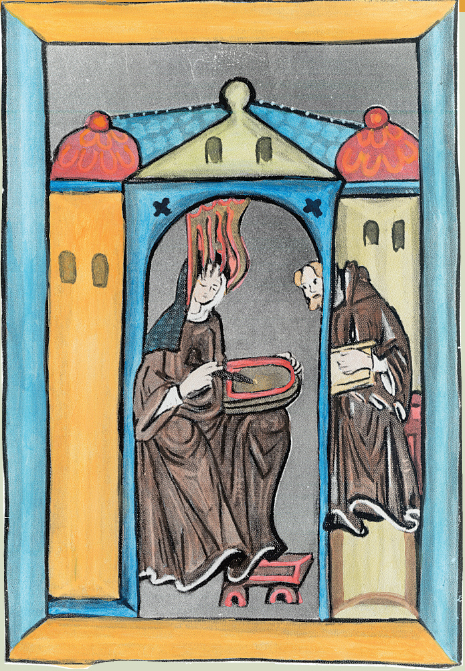Individuals in Society: Hildegard of Bingen

The tenth child of a lesser noble family, Hildegard (1098–
Hildegard’s visions have been explored by theologians and also by neurologists, who judge that they may have originated in migraine headaches because she reports many of the same phenomena that migraine sufferers do: auras of light around objects, areas of blindness, feelings of intense doubt and intense euphoria. The interpretations that she develops come from her theological insight and learning, however, not illness. That same insight also emerges in her music, for which she is best known today. Eighty of her compositions survive — a huge number for a medieval composer — most of them written to be sung by the nuns in her convent, so they have strong lines for female voices. Many of her songs and chants have been recorded and are available on CD, as downloads, and on several Web sites.
*From Scivias, trans. Mother Columba Hart and Jane Bishop, The Classics of Western Spirituality (New York/Mahwah: Paulist Press, 1990), p. 65.
QUESTIONS FOR ANALYSIS
- Why do you think Hildegard sought church approval for her visions after keeping them secret for so many years?
- In what ways is Hildegard’s life representative of nuns’ lives in the High Middle Ages? In what ways were her accomplishments extraordinary?

ONLINE DOCUMENT PROJECT
How did Hildegard of Bingen come to be seen as a worthy instrument for the transmission of God’s word? Keeping the question above in mind, read excerpts from her correspondence and note the qualities that appealed to so many of her contemporaries. Then complete a writing assignment based on the evidence and details from this chapter.
See Document Project for Chapter 9.